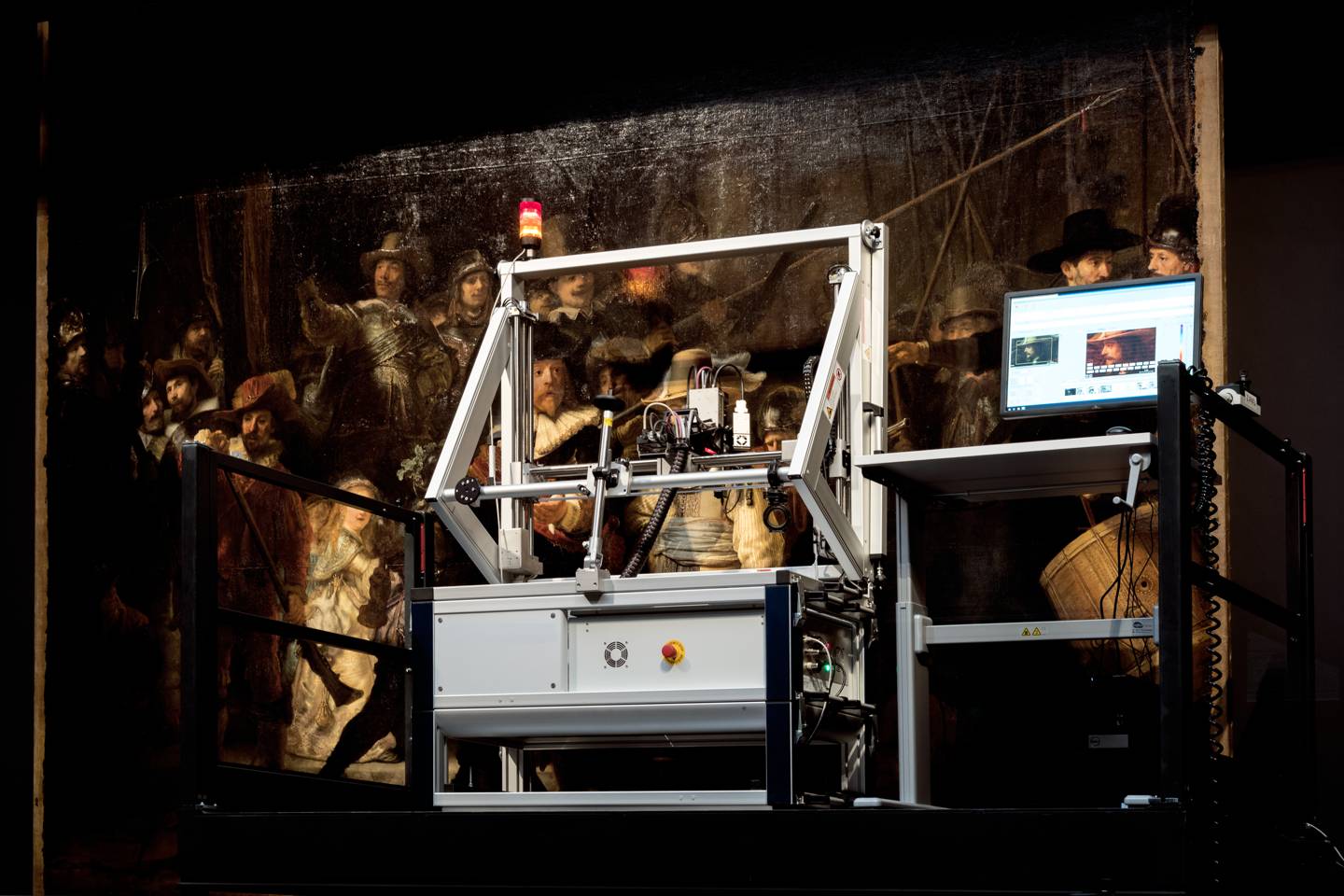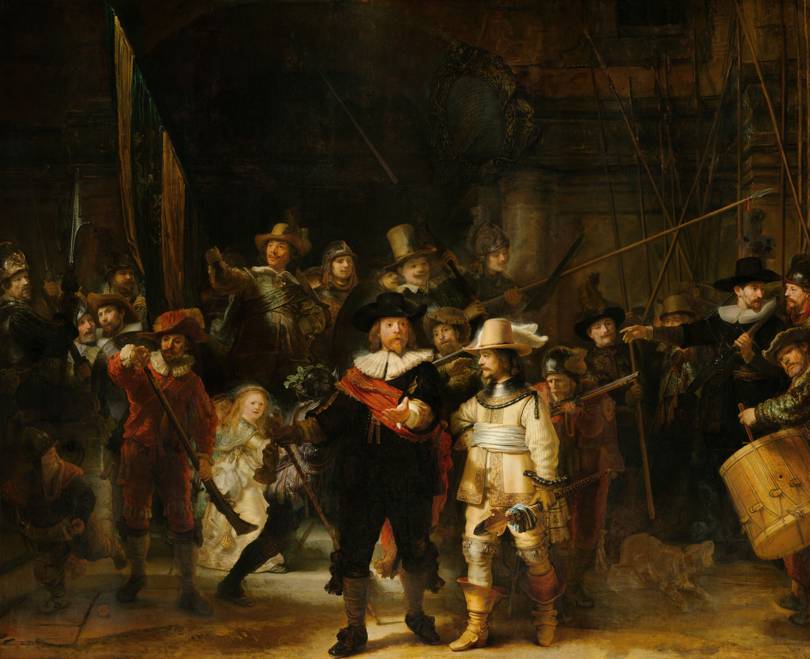From Wired:
An unprecedented project is analysing Rembrandt's masterpiece down to individual chemical elements, to give insight into how the Old Master approached his work

Rembrandt van Rijn’s The Night Watch is one of the world’s best-known paintings. Dating from 1642, the strikingly large canvas – 4.6m across and 3.8m high – depicts a group of civic militia guards led by Captain Frans Banninck Cocq, the central figure with a red sash and lacy collar (the man to his left, resplendent in cream doublet and feathered hat, is his lieutenant, Willem van Ruytenburch).
The scene, which contains 31 figures in total, is unusually chaotic. Rather than solemnly lining up his subjects for a portrait, as was customary at the time, Rembrandt captures them in full, messy action. Guardsmen brandish muskets, pikes and swords; a dog barks at a drummer mid-beat; a young girl peers through the crowd, a chicken hanging from her waistband. Some details glint in Rembrandt’s trademark dramatic lighting while others are cast in shadow, forcing your eyes to dance around the image, picking out new features with each glance.
For more than 200 years, The Night Watch has been in Amsterdam’s Rijksmuseum, where it hangs at the end of the Gallery of Honour, the altarpiece in a cathedral to Dutch painting. On a Wednesday in August 2019, it looks somewhat different to usual. It has been removed from its frame to reveal a few inches of grubby, naked canvas around the edges, and only half of the painting is visible. The rest is obscured by a pair of scissor lifts, on top of which sits a large machine consisting of a grey box with a metal frame positioned parallel to the painting. This is a macro X-ray fluorescence (macro XRF) scanner, an imaging tool used to detect the presence of different chemical elements in an object. The painting and equipment are all encased in a large glass box.The Rijksmuseum is currently undertaking an unprecedented research and conservation project on The Night Watch, which sees it using new imaging tools and data analysis techniques to investigate the painting down to a molecular level. Dubbed Operation Night Watch, the plan combines the expertise of chemists, conservators, computer scientists and historians in an attempt to gain new insight into how Rembrandt approached his masterpiece, what it would have looked like when he first painted it, and how it has changed in the centuries since. The methods developed during the process consider the work from a scientific perspective as much as an artistic one, and could help transform the way we study and restore art.At 8:30am, half an hour before the Rijksmuseum opens to the public, paintings conservators Susan Smelt and Anna Krekeler stand on top of the scissor lift in front of The Night Watch, their feet level with Captain Banninck Cocq’s face. They position the macro XRF scanner in front of a section of the painting about 78cm wide – a patch of muddy-looking background – and carefully manoeuvre the scanner head so that it is exactly one centimetre from the painting’s surface.
“A painting is not like a flat leaf or a flat board; it has a surface, so we need to be sure that we are parallel to the painting,” Smelt says. She and Krekeler work methodically, measuring the distance between scanner head and painting at regular intervals with a piece of soft foam. Shortly after 9am, the first tourists trickle in to see its star exhibit.
It takes until 9:45 for Smelt and Krekeler to complete the setup. As the scanner head starts its slow movement from left to right, orange and red lights appear on the machine to indicate that X-rays are being emitted. Smelt and Krekeler descend on the scissor lift with a clunk and exit the glass box – given the painting’s renown, the museum has made the decision to conduct every stage of Operation Night Watch in sight of its visitors. On the glass door hangs a yellow sign: “Warning: X-ray radiation”........MUCH MORE
Back in 2013 we noted:
Oh Yeah, The Rijksmuseum Reopened: The Nightwatch Flash Mob
...It took ten years of screw-ups but the museum finally reopened and although most folks in Amsterdam seem to hate the building they like what's inside and most any Dutch kid knows Rembrandt's The Nightwatch:

Here's the version uploaded by ING: